You can translate this blog using Google translator widget. And you can always comment in your language, of course!
Yellow texts are in English

montgomery clift
1.2.11
Foto del mes
13.8.10
Red River.- artículo en la Wikipedia (Español / English)
Río Rojo
| Red River | |
|---|---|
| Título | Río Rojo |
| Ficha técnica | |
| Dirección | Howard Hawks |
| Producción | Howard Hawks |
| Guión | Borden Chase Charles Schnee |
| Música | Dimitri Tiomkin |
| Fotografía | Russell Harlan |
| Reparto | John Wayne Montgomery Clift Joanne Dru Walter Brennan Coleen Gray Harry Carey John Ireland Noah Beery Jr. |
| Datos y cifras | |
| País(es) | Estados Unidos |
| Año | 1948 |
| Género | Western |
| Duración | 133 minutos |
| Ficha en IMDb | |
Río Rojo es una película de 1948 protagonizada por John Wayne y Montgomery Clift. La producción, dirigida por Howard Hawks, es incluida por la American Film Institute entre las diez mejores del género Western.
Argumento
La trama gira alrededor del ranchero Thomas Dunson (Wayne), quien, a mediados del siglo XIX, trata de empezar su propia hacienda en Texas. Al inicio de su empresa conoce a un huérfano de nombre Matthew Matt Garth a quien adopta. Al cruzar el río Rojo, y no importándole la propiedad del territorio a manos de otro ganadero, se afinca en la zona. Tiempo después, al terminar la Guerra de Secesión, el rancho de Dunson se encuentra sumido en problemas económicos. Debido a esto, decide emprender la marcha a Misuri donde, según él, encontrará un buen precio por su ganado. Entre sus principales ayudantes se encuentran el entonces adulto Matt (Clift) y Groot Nadine (Walter Brennan). El transcurso de la travesía se desarrolla en io de muchos contratiempos. Agregado a esto, la conducta de Dunson se vuelve tiránica con sus empleados.
Por otro lado, aunque Dunson recibe recomendaciones de enviar su hato hacia Abilene, donde el ferrocarril ha arribado y la ruta es más segura, decide seguir su propósito inicial. En medio de una reyerta, Matt decide dirigirse a Abilene, a pesar de una amenaza de muerte del mismo Dunson ante su rebelión. Matt logra su propósito de vender el ganado en la ciudad, e incluso arregla un cheque a nombre de Dunson para darle parte de las ganancias. Sin embargo, el ranchero logra encontrar al joven Matt y entre ambos estalla una pelea.
Críticas
- New York Times: «en al menos dos terceras partes de la cinta, es una historia real de cowboys y de la dura, peligrosa vida que soportaban».[1]
- Turner Classic Movies: «uno de los grandes Westerns producidos en Hollywood».[2]
- Variety: «la producción y dirección de Howard Hawks le otorga una magnífica interpretación a la historia de la formación del oeste estadounidense...»[3]
Referencias
- ↑ Red River (1948). .Nytimes.com.
- ↑ RED RIVER: The Essentials. TCM.com
- ↑ Red River. Variety.com.
- Red River en Internet Movie Database
- Red River en Filmsite.org
- Red River en Allmovie
- AFI Crowns Top 10 Films in 10 Classic Genres
English text:
Red River
 Theatrical release poster | |
| Directed by | Howard Hawks Arthur Rosson (co-director)[1] |
| Produced by | Howard Hawks |
| Written by | Borden Chase Charles Schnee |
| Starring | John Wayne Montgomery Clift Walter Brennan |
| Music by | Dimitri Tiomkin |
| Cinematography | Russell Harlan |
| Editing by | Christian Nyby |
| Distributed by | United Artists |
| Release date(s) | September 30, 1948 (USA) |
| Running time | 133 min. |
| Country | United States |
| Language | English Spanish |
Red River is a 1948 Western film directed by Howard Hawks, giving a fictional account of the first cattle drive from Texas to Kansas along the Chisholm Trail. The dramatic tension stems from a growing feud over the management of the drive, between the Texas rancher who initiated it (John Wayne) and his adopted adult son (Montgomery Clift).
The film also starred Joanne Dru, Walter Brennan, Coleen Gray, Harry Carey, John Ireland, Hank Worden, Noah Beery Jr. and Harry Carey, Jr. Borden Chase wrote the script with Charles Schnee, based on Chase's story, "The Chisholm Trail."
Contents |
Plot
Thomas Dunson (John Wayne) is a stubborn man who wants nothing more than to start up a successful cattle ranch in Texas. Shortly after he begins his journey to Texas with his trail hand, Nadine Groot (Walter Brennan), Dunson learns that his love interest (Coleen Gray), whom he had told to stay behind with the wagon train with the understanding that he would send for her later, was killed in an Indian attack. Despite this tragedy, Dunson and Groot press on, only to chance on an orphaned boy named Matthew Garth (played as an adult by Montgomery Clift), whom Dunson effectively adopts. With only a couple head of cattle, Dunson and the boy enter Texas by crossing the Red River and Dunson proudly proclaims all the land about them as his own. Two Mexican men appear on horseback and inform Dunson that the land already belongs to their boss. Dunson dismisses this inconvenient fact, kills one of the men, and tells the other man to inform his boss that Dunson now owns the land. Dunson names his new spread the Red River D, after his chosen cattle brand for his herd. Fatefully, he promises to add M (for Matt) to the brand, once Matt has earned it.
Fourteen years pass and Dunson now has a fully operational cattle ranch. With the help of Matt and Groot, his herd now numbers over ten thousand cattle, but he is also broke as a result of having been on the losing side in the American Civil War. With the price of cattle in Texas not to his liking, Dunson decides to drive his massive herd hundreds of miles north to Missouri, where he believes they will fetch a much better price. After hiring some extra men to help out with the drive, including expert marksman Cherry Valance (John Ireland), they set off on their perilous journey northwards. Along the way, they encounter many troubles, including a stampede sparked by one of the men making a sudden noise while trying to steal sugar from the chuck wagon.
Deeper problems arise when Dunson's tyrannical leadership style begins to affect the rest of the men. When Dunson attempts to lynch two of the men who tried to desert the drive, Matt rebels. With the help of Valance and the other men, Matt takes control of the drive in order to take it to the closer railhead in Abilene, Kansas, leaving Dunson behind. This infuriates Dunson, who vows to track down Matt and kill him.
On the way to Abilene, Matt and his men repulse an Indian attack on a wagon train. One of the people they save is Tess Millay (Joanne Dru), who falls in love with Matt. Matt leaves in a hurry one night during a rain storm and has to leave Tess behind. Later Tess encounters Dunson, who is still on Matt's trail, and tries to dissuade him from his pursuit. She offers to bear him a son if he'll let Matt live, but he refuses.
When Matt reaches Abilene, he finds men there who have been eagerly awaiting the arrival of such a herd to buy it; Matt happily accepts an excellent offer for the cattle. Unknowingly, he has just completed the first cattle drive along what would become the Chisholm Trail. Shortly thereafter, Dunson arrives in Abilene with a posse to follow through with his vow to kill Matt. The two men begin a furious fight, which Tess interrupts by drawing a gun on both men and demanding that they realize the love that they share for each other. Dunson and Matt see the error of their ways and make peace with each other. The film ends with Dunson telling Matt that he will incorporate an M into the brand as he had promised to do years before and advises Matt to marry Tess.
Production
Red River was filmed in 1946 but not released until September 30, 1948. Footage from Red River was later incorporated into the opening montage of Wayne's last film, The Shootist, to illustrate the backstory of Wayne's character. The film was nominated for Academy Awards for Best Film Editing (Christian Nyby) and Best Writing, Motion Picture Story. In 1990, Red River was selected for preservation in the United States National Film Registry by the Library of Congress as being "culturally, historically, or aesthetically significant." John Ford who worked with Wayne on many films (such as The Searchers, Stagecoach, and The Man Who Shot Liberty Valance) was so impressed with Wayne's performance that he is reported to have said, 'I didn’t know the big son of a bitch could act!'[2] In June 2008, AFI revealed its "Ten top Ten"—the best ten films in ten "classic" American film genres—after polling over 1,500 people from the creative community. Red River was acknowledged as the fifth best film in the western genre.[3][4]
The character name Cherry Valance was also later used in the novel The Outsiders.
The character name Matthew Garth was also later used in the movie Midway.
Cast
- John Wayne as Thomas Dunson
- Montgomery Clift as Matthew 'Matt' Garth
- Joanne Dru as Tess Millay
- Walter Brennan as Nadine Groot
- Coleen Gray as Fen
- Harry Carey as Mr. Melville
- John Ireland as Cherry Valance
- Noah Beery Jr. as Buster McGee
- Harry Carey Jr. as Dan Latimer
- Chief Yowlachie as Quo
- Paul Fix as Teeler Yacey
- Hank Worden as Sims Reeves
- Ray Hyke as Walt Jergens
- Wally Wales as Old Leather
- Mickey Kuhn as Matt (as a boy)
See also
References
- According to TCM, "Arthur Rosson was given co-director credit because of his extensive and acclaimed work guiding the second unit...", http://www.tcm.com/thismonth/article/?cid=158108&rss=mrqe.
- ^ http://www.tcm.com/thismonth/article/?cid=12472, retrieved 2008-09-21.
- ^ American Film Institute (2008-06-17). "AFI Crowns Top 10 Films in 10 Classic Genres". ComingSoon.net. http://www.comingsoon.net/news/movienews.php?id=46072. Retrieved 2008-06-18.
- ^ "Top Western". American Film Institute. http://www.afi.com/10top10/western.html. Retrieved 2008-06-18.
Further reading
- Pippin, Robert B. Hollywood Westerns and American Myth: The Importance of Howard Hawks and John Ford for Political Philosophy (Yale University Press, 2010) 208 pp.
External links
| Wikiquote has a collection of quotations related to: Red River (1948 film) |
- Red River (1948 film) at the Internet Movie Database
- Red River (1948 film) at the TCM Movie Database
- Red River (1948 film) at Allmovie
- Internet Archive: March 7, 1949 radio adaptation of the film originally broadcast by Lux Radio Theater
- Detailed review of Red River
| [hide] Films directed by Howard Hawks | |
|---|---|
| 1920s | |
| 1930s | The Dawn Patrol • The Criminal Code • La Foule hurle • Scarface • The Crowd Roars • Tiger Shark • Today We Live • The Prizefighter and the Lady • Viva Villa! • Twentieth Century • Barbary Coast • Ceiling Zero • Sutter's Gold • The Road to Glory • Come and Get It • Bringing Up Baby • Only Angels Have Wings |
| 1940s | His Girl Friday • Sergeant York • Ball of Fire • Air Force • To Have and Have Not • The Big Sleep • Red River • A Song Is Born • I Was a Male War Bride |
| 1950s | |
| 1960s | |
| 1970s | |
11.8.10
Red River.- carteles
El primer cartel corresponde a los programas de mano que se daban antes en los cines.
6.8.10
Red River.- pósters extranjeros
1.- "La riviere rouge" póster francés
2-3-4.- "Il fiume rosso" pósters italianos
5-6.- "Panik am roten fluss" pósters alemanes
7.- Póster conmemorativo 25 años alemán
8.- Póster conmemorativo 25 años sueco
18.4.10
Retrato (28)
 Un retrato bastante conseguido, tratándose como creo de un dibujante amateur. De hecho refleja una expresión de dureza que pocas veces mostró Monty, salvo en Red River (Río Rojo, 1949) que es la película en que se basa el dibujo.
Un retrato bastante conseguido, tratándose como creo de un dibujante amateur. De hecho refleja una expresión de dureza que pocas veces mostró Monty, salvo en Red River (Río Rojo, 1949) que es la película en que se basa el dibujo.20.3.10
Monty inédito (13).- still of Red River
28.2.10
Red River.- crítica (2)

By Carter B. Horsley
The non-nonsense swagger, good looks and long career of John Wayne made him the most famous male movie star of the 20th Century and a major icon of American culture.
He was the quintessential quiet but strong leading man who was given more to force than words. Widely imitated and parodied, Wayne's success was based on his persona as a "he-man hero" without peer. His early reputation was based mainly on his glamour and he achieved major stardom in "Stagecoach," a 1941 western, after about a decade of work mostly in minor westerns.
In this film, Wayne portrays Tom Dunson, a troubled, embittered and mean rancher who loses the respect on a cattle drive of his fellow cowboys and his adopted son, Matthew Garth, who is portrayed by Montgomery Clift in his screen debut. Wayne's portrayal of Dunson demonstrated that he could be a very good actor for he ages admirably in the film and his performance is memorable not only for its strength but also its subtlety.
While the movie is far from perfect, it is extremely interesting in its pairing of Wayne and Clift in the leading roles. Clift is quite wonderful. He is cocky, sensitive, tortured, romantic, headstrong, uncertain, fearful and respectful, and very expressive, all qualities that James Dean would embody a few years later in his brief but stunning career. Clift's persona is rather poetic whereas Wayne's is titanic and bold. Both are highly mannered but in very different ways.
Wayne is simple and brutish. His walk/saunter is that of a determined, possessed, focused man.
Clift is more dimensional. His hesitatations, ponderings and waverings are that of a sensitive, reflective, idealistic individual.
Their characters, however, are not black-and-white. Clift is agile with his gun and no coward. Wayne may not hesitate to shoot someone, but will honor them with a "reading" over their grave.
Many critics and reviewers have commented that the film's "love interests," initially Coleen Gray for Wayne and later Joanne Dru for Clift, slow the film's momentum. They are, however, necessary as Gray's death early in the film helps the viewer sympathize with Dunson's bitterness and lack of humor and Dru's appeal to Dunson to spare Matt's life after he has led a mutiny of Dunson's men and expelled him from the cattle drive is a quite remarkable and surprising scene in which her willingness to sacrifice her love of Matt by agreeing to give Dunson an heir is as startling as Dunson's request. Dru, a very beautiful brunette who would appear in other Westerns with Wayne, portrays a "pioneer" woman of formidable strength. She handles this scene very well and it is perhaps the finest in Wayne's career. When Matt first encounters Dru, she has been wounded in her right shoulder by an arrow during an attack by Indians on her wagon train. The scene is quite surreal as she asks Clift many personal questions while he is shooting at the attacking Indians. Many reviewers have scoffed at the scene's incongruous dialogue, but it is one of the film's surprises, which is needed because of its quite slow beginning. We take most of the clichés of the Western genre in stride and because this film used many as well as setting many the scenes with Dru are jolting, but they serve the purpose of making the drama much more interesting as well as giving a pre-politically correct culture a big dose of feminism.
Most critics and reviewers have been disappointed with the film's ending when Dru breaks up the "showdown" fight between Dunson and Matt with a long harangue about how much they love one another. Virtually all those critics and reviewers note that however much they are dismayed by this "happy" ending, the intensity of the film is not seriously impaired. To a large extent, they are right: Matt refuses Dunson's demand that he draw, but after being punched about he does fight back, although the viewer suspects that Matt would not kill Dunson under any circumstances and Dunson's march on foot through a herd of cattle suggests that nothing will dissuade him from revenging Matt's mutiny. In retrospect, however, the ending fits well with the scene in which Dru appealed to Dunson to spare Matt. Dunson has been humiliated and humbled by Matt, the presumptive heir to his empire. Dunson recognizes that Dru is a remarkable enough woman to ask her to have his child. He has raised Matt for about 15 years and clearly had come to love him.
Wayne's decision to relent after her harangue is really not all that surprising. One often sees the humor, if not futility, of anger at the moment of rage. It is one of the thin lines that usually makes truth stranger than fiction. A hero encounters fear. A villain discovers guilt, or remorse, or just tiredness. Anger needs to be spent somehow and time often is a fine cure and some things that appear ultimate and vital and uncompromisable sometimes are shocked in different perspectives.
The characters portrayed by Wayne, Clift and Dru are absorbing and interesting. We are fascinated by them and their unpredictability and their maturing. Our interest in them is also supported by its focus on people's often misplaced hope that other people can change their personality.
This epic Western film is about the first cattle drive in 1865 on the Chisholm Trail from Texas to Abilene. Like some of John Ford's westerns, it suffers some from the rather hokey singing that would be more appropriate for a children's campfire than the rigors of a real cattle drive, and one wonders why both directors resorted to such campiness in this genre. Presumably, such scenes were included for a bit of levity and relief from the more somber realities of the stories and perhaps to appeal to a wider "family" audience, but apart from establishing camaraderie, which is not unimportant, they detract from the sweep and impact of the stories.
The American mythologizing of the "pioneer" West goes back a long ways, but this film is one of the classics that defined the genre. "Westerns" would not begin to treat Native Americans with much respect for another couple of decades and their appeal has always been the primary notion of rugged individualism in a wild and awesome physical environment. Pure lyricism, of course, rarely made for good drama. Simple morality of the good guys and the bad guys did, even though life is more complex and this film, to its credit, focuses on those complexities to a good extent.
En la web The city review aparece esta crítica de Red River (Río Rojo, 1946):
3.2.10
Sesión de fotos (16): comentarios
 Joanne Dru fue la primera pareja de Montgomery Clift en el cine, pero es sin duda la que menos se asocia con él. No es una actriz conocida y aunque hace bien su papel de Tess Millay en Red River (Río Rojo, 1948), siempre me pareció mayor (en realidad era 2 años más joven que Monty) y nada sexy. En cambio Monty despliega con ella toda su ternura y su romanticismo más encantador. Las fotos de estudio que le hicieron juntos dan prueba de ello. Aunque también diríase que es de las poca veces en que Monty aparece menos vulnerable.
Joanne Dru fue la primera pareja de Montgomery Clift en el cine, pero es sin duda la que menos se asocia con él. No es una actriz conocida y aunque hace bien su papel de Tess Millay en Red River (Río Rojo, 1948), siempre me pareció mayor (en realidad era 2 años más joven que Monty) y nada sexy. En cambio Monty despliega con ella toda su ternura y su romanticismo más encantador. Las fotos de estudio que le hicieron juntos dan prueba de ello. Aunque también diríase que es de las poca veces en que Monty aparece menos vulnerable.Ver fotos.
Sesión de fotos (16): con Joanne Dru
4.1.10
Red River.- opening credits
29.12.09
3 fotos

4.11.09
Red River.- Doctor Macro's High Quality Movie Scans
| RED RIVER |
| United Artists, 1948. Directed by Howard Hawks. Camera: Russell Harlan. With John Wayne, Montgomery Clift, Joanne Dru, Walter Brennan, Coleen Gray, Harry Carey, Sr., John Ireland, Noah Berry, Jr., Harry Carey, Jr., Chief Yowlachie, Paul Fix, Hank Worden, Mickey Kuhn, Ray Hyke, Hal Taliaferro, Lane Chandler, Davison Clark, Harry Cording, Richard Farnsworth, Paul Fierro, George Lloyd, Pierce Lyden, John Merton, Ivan Parry, Lee Phelps, William Self, Glenn Strange, Tom Tyler, Dan White, Shelley Winters. |
In 1851, Thomas Dunson and his friend, Groot Nadine, leave St. Louis and join a wagon train headed for California. When they reach the northern border of Texas, they decide to remain there and establish a cattle ranch. Fen, Tom's sweetheart, wants to stay with him, but he tells her that he will send for her later and gives her his mother's bracelet. Soon after Tom and Groot take their wagon and bull and head south to the Red River, they look back and see that the wagon train has been attacked and burned by Comanche Indians. That night, several Indians attack Tom and Groot's camp, and Tom is horrified to discover the bracelet he gave to Fen on the wrist of an Indian he killed in the struggle. The next day as Tom and Groot break camp, a young boy, Matthew Garth, who has escaped the wagon train massacre, wanders toward them with his cow. Tom and Groot take the dazed boy with them, cross the Red River and head farther south until, near the Rio Grande, Tom finds an area he likes. The land legally belongs, by land grant, to a Mexican; but after Tom kills one of the owner's gunmen and drives off another, he claims it for himself. Tom's bull and Matt's cow then become the beginning of a great herd sporting the Red River-D brand. Fifteen years later, the ranch boasts thousands of cattle, but Tom faces ruin unless he can move them from the impoverished, post-Civil War market. He decides to take ten thousand head a thousand miles to Missouri, where the railroads serve the North and East; Matt, now grown to manhood and like a son to Tom, helps to plan the drive. Tom also agrees to take several head belonging to a neighboring rancher, and one of the neighbor's ranch hands, Cherry Valance, joins the drive. Both Cherry and Matt are expert gunmen and enjoy a friendly, if intense, rivalry. After a few days on the trail, the men reach the Brazos. Hills and rocks impede their progress and the cowboys become tired and unhappy. One night, when the cattle are restless, cowboy Bunk Kenneally, takes some sugar from Groot's chuck wagon and accidentally knocks over pots and pans, spooking the cattle and causing a stampede. Cowboy Dan Latimer is killed in the stampede; although Bunk admits his mistake, he refuses to allow Tom to whip him and draws his gun. However, Matt shoots Bunk before he can shoot Tom. Forty days into the drive, the men are forced to endure heavy rains and short rations, as a grub wagon was lost in the stampede. Tom becomes very demanding and faces dissension among the cowboys. Some days later, a wounded wrangler from another drive rides into camp and explains that his group was attacked by a large gang of outlaws after they crossed the Red River. He also tells them about a trail blazed by an Indian trader, Jesse Chisholm, to a railroad terminus in Abilene, Kansas. When three of Tom's men state that they should be heading to Abilene instead of Missouri, and threaten to quit, Tom kills them. More men desert with supplies and Tom sends Cherry after them.
When the herd reaches the Red River, Tom decides to cross immediately, despite the men's exhaustion. That night, Groot suggests to Tom, who has not been sleeping and has started drinking, that he tell the men that they did well,, but he refuses. The next day, when Cherry returns with two of the deserters, Tom says he is going to hang them, but Matt intervenes. As Tom goes to draw his gun on Matt, Cherry shoots him in the hand. Matt then assumes command of the drive, and they head to Abilene, leaving Tom behind. Tom swears that one day he will catch up with Matt and kill him. On the drive, Matt and the others encounter a wagon train being attacked by Apache Indians whom they help to drive off. Matt meets Tess Millay, one of the wagon train's settlers and, before he resumes the drive, they have fallen in love. Tom and some new men he has hired to pursue the train catch up with it; when Tess tells Tom that she had wanted to go with Matt, Tom remembers leaving Fen. Tess then tries to persuade Tom not to kill his "son," and Tom offers her half of everything he owns if she will bear him a son. Tess agrees on the condition that he abandon his mission to kill Matt, but Tom declines. On August 14, 1865, Matt's team reaches Abilene and cecomes the first cattle drive to cross over the Chisholm Trail. They receive a great welcome from the townspeople, and Melville, a representative of an Illinois trading company, makes Matt a very good offer for the herd and gives him a check payable to Tom. That night, Matt finds Tess waiting for him at his hotel. She warns him that Tom will be coming into town just after dawn to kill him. The next day, as Matt prepares to face Tom, Cherry challenges Tom, who shoots him but is injured by his return fire. Matt refuses to draw his gun against Tom but, when Tom attacks him with his fists, Matt fights back. Their brawl is interrupted by Tess, who fires a gun and angrily reminds them that they both love each other. After Tom tells Matt that he should marry Tess, he and Matt are finally reconciled. Tom then tells Matt that, as he had promised years before, he will create a new branding iron to include Matt's name, as he has earned it. Notes The summary was based on a viewing of a modern "Restored Director's Cut" of the film. In a letter contained in the AMPAS Library file on the film, the attorney for Monterey Productions stated that the company bought the original story from Borden Chase, and after certain changes had been made, the story was published in The Saturday Evening Post.
Exterior photography was done around Elgin, Arizona, south of Tucson, and interiors were filmed on the Samuel Goldwyn lot. Red River was the first film Montgomery Clift made, although his second, The Search, was released first. According to a interview with Howard Hawks in a modern source, Joanne Dru was a last-minute substitute for Margaret Sheridan, who had to be replaced when she was discovered to be pregnant. A February 1, 1948 NYT news item noted that the film's original budget was $1,800,000 and that an organization of private capitalists known as Motion Picture Investors provided a bond guaranteeing the film's completion at an eventual cost of $2,700,000. In December 1948, DV reported that the film's final cost was $4,100,000 and that the domestic gross was "being figured all the way from $4,000,000 to $5,500,000," with an additional $2,000,000 in foreign revenues. Immediately prior to the film's premiere on August 26, 1948 in theaters in Texas, Oklahoma and Kansas, millionaire producer Howard Hughes filed an injunction against the film's openings in Texas, contending that the climactic gunfight sequence between "Tom" and "Matt" paralleled that in Hughes' The Outlaw, a production on which Hawks had briefly worked in 1940. To placate Hughes, Hawks cut approximately 28 seconds from the scene. A DV news item reported that Consolidated and Pathé laboratories worked through the weekend prior to the film's premiere to produce prints of the revised sequence and that editor Mel Thorsen was sent to film exchanges in Dallas, Kansas City and New York to supervise the changes. The "Director's Cut" of Red River , which was issued in 1987, is approximately seven minutes longer than the original release print and reinstates the footage excised due to the Hughes injunction. The 1948 version includes a spoken narration by Walter Brennan's "Groot Nadine" character, whereas the later version eliminates the narration and uses handwritten text from the Early Tales of Texas "diary." Other minor differences include additional shots before the stampede and the saving of the wagon train sequences, as well as a brief conversation between "Matt" and "Melville" as the cattle enter Abilene. Modern sources add Pierce Lyden, Lee Phelps, George Lloyd, John Merton and Richard Farnsworth to the cast. A radio adaptation of the film, starring Wayne and Dru, was broadcast on Lux Radio Theater on March 7, 1949. Red River received Oscar nominations in the Motion Picture Story and Film Editing categories. On April 10, 1988, the CBS network broadcast a remake of Chase's story, starring James Arness and Bruce Boxleitner, and directed by Richard Michaels. Includes the song "Settle Down," words and music by Dimitri Tiomkin. | ||||||||||||||||||||||||||||||||||||
Poster artwork courtesy of Dieter
Su carrera comprende 17 títulos entre 1948 y 1966. Trabajó con los grandes directores (Hawks, Hitchcock, Stevens, Zinnemann, Kazan, Huston, Wyler) y las grandes estrellas (Lancaster, Marilyn Monroe, Katherine Hepburn, Brando, Wayne, Elizabeth Taylor especialmente) de entonces.
Su carrera comprende 17 títulos entre 1948 y 1966. Trabajó con los grandes directores (Hawks, Hitchcock, Stevens, Zinnemann, Kazan, Huston, Wyler) y las grandes estrellas (Lancaster, Marilyn Monroe, Katherine Hepburn, Brando, Wayne, Elizabeth Taylor especialmente) de entonces.
Say, where did I see this guy?
In red river?
Or a place in the sun?
Maybe the misfits?
Or from here to eternity?
Everybody say, is he all right?
And everybody say, whats he like?
Everybody say, he sure looks funny.
Thats...Montgomery Clift, honey!
New York, New York, New York, 42nd street
Hustlers rustle and pimps pimp the beat
Monty Clift is recognized at dawn
He aint got no shoes and his clothes are torn
I see a car smashed at night
Cut the applause and dim the light
Monty's face is broken on a wheel
Is he alive? can he still feel?
Everybody say, is he all right?
And everybody say, whats he like?
Everybody say, he sure looks funny.
Thats...Montgomery Clift, honey!
Nembutol numbs it all
But I prefer alcohol
He said go out and get me my old movie stills
Go out and get me another roll of pills
There I go again shaking, but I aint got the chills


















.-+albornoz+(4)+BLOG.jpg)

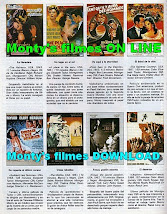














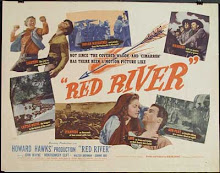
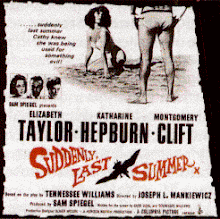




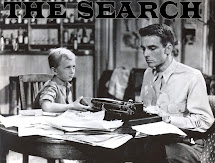

2.jpg)
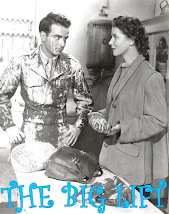.jpg)
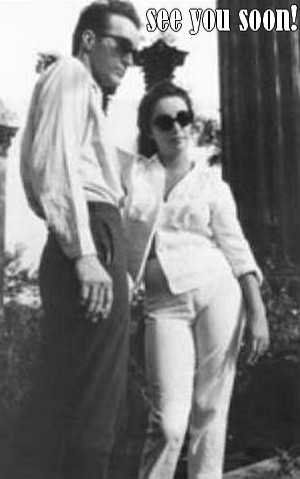

.jpg)

